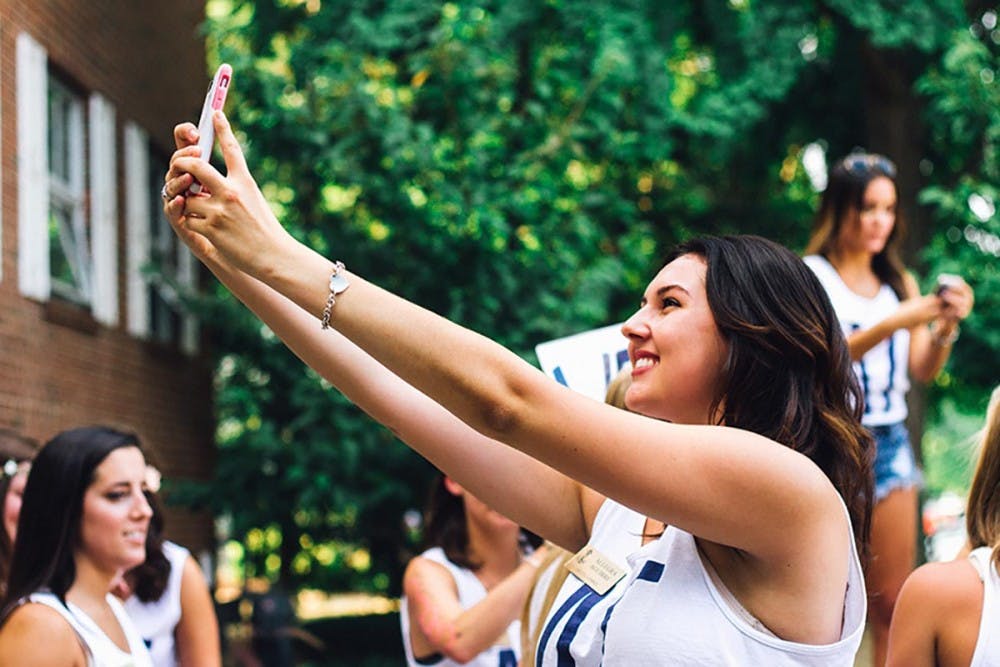A police officer shot an unarmed teenager and the next day people across the nation knew. Before masses could take to the streets in Ferguson, Missouri, Twitter, Youtube, and Instagram blew open a path for the ensuing images and outrage to rush through. Beneath the banner of #BlackLivesMatter, people mobilized from coast to coast. Seventy-nine percent of Americans say they feel more inclined to support social or environmental issues if they feel their contribution will make a difference or if immediate support is needed, reports Cone Communications. Millennials recognize the power of social media, and are taking on issues they care about to create change.
Despite this, the stereotype of the self-obsessed digital-native is a pervasive and popular one. So much so that when a 2013 article by satirical Filipino news blog, “The Adobo Chronicles,” claimed selfies were indicative of a mental disorder, people bought it. The post went viral, scoring more than 18,000 viewers across top platforms: all from a site that proclaims itself to be “your source of up-to-date, unbelievable news.”
A study by the American Press Institute found that 88 percent of Millennials get news from Facebook, with high percentages using Pinterest, Twitter, Reddit, and Tumblr as well. Millennials are also by far the most likely generation to post photos of themselves online, according to Pew Research.
But in many ways, Millennials are defying the trend of youthful narcissism by using social media as a tool to organize, heal, and help others.
Activism, not slacktivism
Positive results can be hard to quantify in the rising culture of activism through social media, affectionately known as slacktivism. The Baby Boomers involved with the two-decade heyday of political-social rallies and marches from the ’60s to the ’80s might be left wondering where all of the protestors have gone. Millennials, however, seemed to have embraced this form of digital activism. Two out of three Millennials believe that online awareness can be just as effective as in-person activism, according to a 2012 study by the consumer research firm The Intelligence Group.
When Jacob Cail and Michael Mahoney, two twenty-something Muncie, Indiana residents, wanted to campaign for presidential candidate Bernie Sanders, the Internet was their first stop. Michael created the Facebook group Muncie for Bernie Sanders and posted the link to Reddit.
Using the page as a staging ground, the two organized regular meetings on and off Ball State University’s campus. Though the group currently only has about a dozen people at the meetings, its online support has increased to about 200 members in only a few weeks. Jacob started the group Progressive Student Alliance, which also has the current main goal to campaign Bernie Sanders while also working on other progressive issues on campus.
Many of Muncie for Bernie Sanders’ members are a part of other social-political student groups around the area, such as Ball State Democrats and Feminists for Action. These types of weak ties multiplied by shared ideals and social media may seem less influential than the strong ties of traditional protesting. But the incremental spread of grassroots support is what keeps Millennial ideals growing.
“I spoke to the Feminists for Action and asked them to announce this meeting for [its] members to come learn about Bernie Sanders, if it’s not already supporting him,” Michael said.
“We are grouping up with [FA] to do the SlutWalk (a rally against rape culture) in the coming weeks,” Jacob added. “We’re just trying to outreach to a bunch of different groups that fall under the umbrella of progressivism. We’ve also talked to the Black Student Alliance.”
To continue reading about collective medicine, mixing old models with new, and narcissism, visit BallBearingsMag.com





